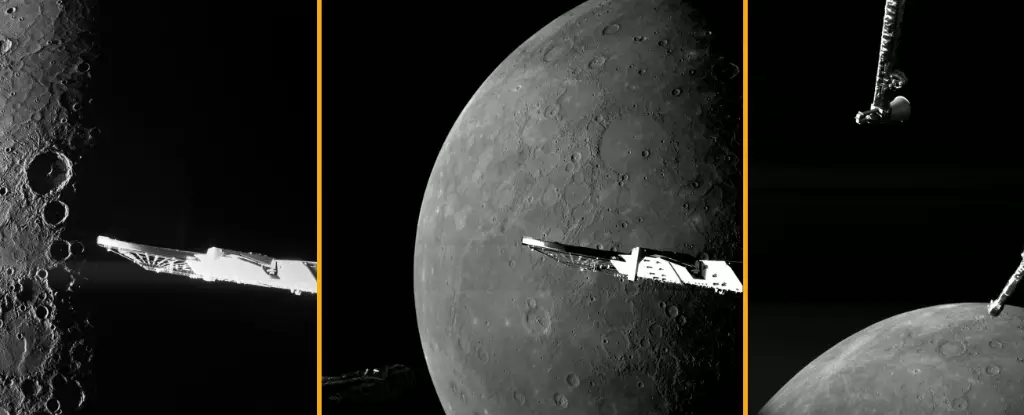The BepiColombo mission, a collaborative endeavor between the European Space Agency (ESA) and the Japan Aerospace Exploration Agency (JAXA), has recently achieved a remarkable milestone. The mission’s transfer probe has completed its final flyby of Mercury, providing unprecedented close-up images taken from a mere 295 kilometers above the planet’s surface. These photographs offer a glimpse into the stark and extreme conditions of Mercury, a world characterized by its vast contrasts—the unyielding dark shadows contrasted against sunlit crater rims that bear the scars of relentless solar bombardment.
As the scientific community eagerly anticipates the analysis of this data, the ESA’s Project Scientist, Geraint Jones, emphasized the importance of this flyby. He noted that while the primary mission phase is still two years away, the information gathered from the six flybys will significantly contribute to our understanding of this enigmatic planet. The team is now focused on deciphering the complexities of Mercury’s surface and its hidden history, which may reveal crucial insights into our solar system’s formation.
Mercury is a planet like no other. Orbiting the Sun at an average distance of roughly 58 million kilometers (36 million miles), it is only slightly larger than Earth’s Moon. The planet endures extreme temperatures that fluctuate drastically; at its hottest, the surface reaches temperatures of approximately 430 degrees Celsius (over 800 degrees Fahrenheit), while the chilling absence of sunlight in certain regions can plummet temperatures to -180 degrees Celsius. This volatile environment poses unique challenges for scientific inquiry into the planet’s characteristics.
Despite its inhospitable conditions, Mercury’s surface hides intriguing geological features and potential anomalies, such as an unexplained magnetic field and the presence of carbon deposits, which might suggest the existence of a subterranean diamond layer. These features set the stage for a deeper investigation into the planet’s geological history and current processes. The ongoing research will be crucial in addressing fundamental questions about Mercury’s composition and behavior.
The newly captured images depict the remnants of past volcanic activity and impact events, contributing to the narrative of a planet that has undergone significant transformations. Noteworthy geological formations, such as the Nathair Facula, showcase signs of Mercury’s largest known volcanic eruption, highlighting a vent that spans approximately 40 kilometers in diameter. The nearby Fonteyn crater, relatively young at just 300 million years, further underscores the dynamic history of this seemingly desolate world.
As BepiColombo continues its mission, the results will enhance our understanding of not only Mercury’s geological features but also its atmospheric conditions. The oppressive radiation and solar winds continually strip away what remains of its tenuous atmosphere, complicating our efforts to understand the planet’s evolution since it lacks a substantial atmosphere to mitigate temperature extremes.
Launched in October 2018, BepiColombo’s ultimate goal is to transition into its primary scientific operations, which include detailed studies of Mercury’s magnetosphere, surface features, and gaseous exosphere. By 2026, the spacecraft will deploy two orbiter modules—the ESA’s Mercury Planetary Orbiter and JAXA’s Mercury Magnetospheric Orbiter. These instruments will embark on collecting data crucial to elucidating the mysteries surrounding Mercury while maintaining a safe operational distance of 480 kilometers from the surface.
The accumulation of data from these missions is expected to paint a comprehensive picture of Mercury’s geological history, its current state, and its interactions with the solar environment. As researchers pour over the flyby data in the coming weeks, it is evident that the exploration of Mercury is only at its nascent stage. Ultimately, BepiColombo promises to be a key player in unlocking the secrets of our solar system’s innermost planet, offering a clearer understanding of its past, present, and potential future.


Leave a Reply